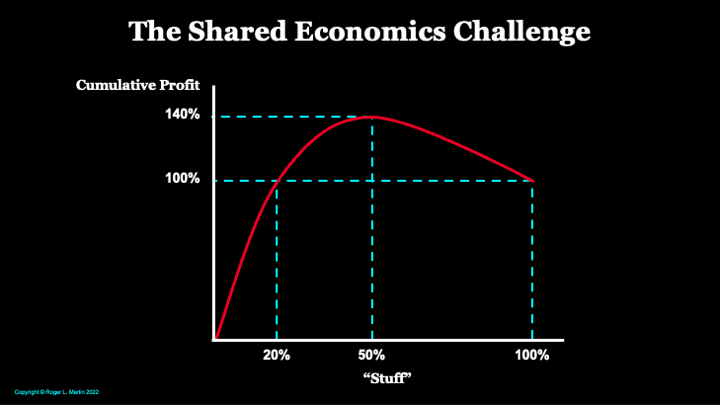Quando comecei a usar este blogue em 2004 pensei que seria uma espécie de base de dados para pesquisar e acessar material das formações e workshops.
Julgo que foi com postais como este "Autópsia de uma estratégia, feita à distância (parte I)" e este outro "Autópsia de uma estratégia, feita à distância (parte II)" em Outubro de 2007 que comecei a ver o blogue de outra maneira.
Ontem, no WSJ li "Skechers' Focus on Casual Shoes Pays Off" e voltei a recordar estas autópsias feitas à distância.
Para destacar a importância de uma estratégia bem definida, é essencial observar como a Skechers adaptou a sua abordagem para competir com gigantes do sector, como a Nike e a Adidas, concentrando-se na compreensão do seu público-alvo e na diferenciação. Again, estratégia não é sobre como vencer a concorrência, mas sobre como ganhar a preferência dos clientes-alvo.
"Nike has superstars. Hoka has tapped into hardcore runners. Tech bros are willing to pay up for On shoes. Skechers thrives on retirees looking for comfortable kicks and families looking for something more affordable for their children."
A Skechers compreendeu claramente que "Nike has superstars" e que competir directamente no segmento da alta performance e com grandes celebridades não seria a sua estratégia mais eficaz. Em vez disso, a empresa optou por abordar mercados negligenciados, posicionando-se como uma marca de calçado acessível e confortável, perfeita para "retirees looking for comfortable kicks and families looking for something more affordable for their children." Este foco ajudou a Skechers a estabelecer uma ligação directa com consumidores que procuravam qualidade e conforto a preços acessíveis.
"Skechers shifted in recent years into the performance arena to fill what its leaders see as openings left by Nike and others.
The business got a boost from Nike's decision during the pandemic to exit from many retailers that catered to lower-income consumers and focus on selling directly to consumers.
Nike also cut back on styles that sold for less than $100."
Além disso, a empresa percebeu a oportunidade de capitalizar sobre as lacunas deixadas pelos seus concorrentes. Evitar o confronto directo. Enquanto a Nike cortou estilos que custavam menos de $100, a Skechers decidiu expandir a sua linha para atrair consumidores de rendimento baixo e médio. Como mencionado, "Skechers shifted in recent years into the performance arena to fill what its leaders see as openings left by Nike and others." Esta adaptação demonstrou a capacidade da empresa em identificar nichos de mercado e aproveitar lacunas estratégicas deixadas pelos seus concorrentes.
"It is on track to net $10 billion in revenue by 2026, without achieving the coolness status that can juice demand for a brand.
Skechers did it by capturing parts of the market that are largely neglected by its competitors."
Outro ponto de destaque foi o uso de inovação acessível, como a linha de Slip-ins, que permitiu à Skechers criar produtos diferenciados sem a necessidade de "achieving the coolness status that can juice demand for a brand." Em vez de competir directamente pelo prestígio, a empresa focou-se em oferecer valor prático, tornando-se a terceira maior empresa de calçado do mundo em vendas.
"Skechers does work with designers, street artists and celebrities, but executives said they don't rely on projects that are limited releases because they don't think limited releases generate the same hype and awareness as they do for other brands.
"That's not really our consumer," said Vandemore, the finance chief. "That's not what somebody's looking for us to do.""
Estes exemplos ilustram como compreender os consumidores-alvo, aliada a uma estratégia focada na diferenciação, pode gerar resultados expressivos, mesmo num mercado dominado por gigantes. Ter clareza sobre "who your customer is" e sobre "what holes exist in the market" é essencial para que as empresas possam prosperar num ambiente competitivo.
Há uns 5/6 anos durante aqueles dias em que o chão está molhado aconteceram-me várias coisas com o calçado que me levaram a olhar para as solas com um outro cuidado.
Primeiro, cuidado com calçado barato, com solas pouco flexíveis e que rapidamente sofrem micro fissuras por onde a humidade entra e, qual papel mata borrão, é absorvida pelas meias gerando uma sensação de desconforto e o receio de apanhar uma constipação.
Segundo, cuidado com solas que não geram atrito suficiente e que, quando as condições se proporcionam - chão molhado e branco das passadeiras, facilitam quedas.
Decidi pesquisar solas que me dessem garantias e foi assim que cheguei às botas da Skechers. Um par durou-me 3 Invernos, ainda o tenho e uso de vez em quando, depois outro, que estou a calçar agora, e isso levou-me aos slip-ins. Hoje, tirando as sapatilhas que só uso para correr, todo o resto do calçado é da Skechers.
Para as empresas de calçado em Portugal: Portugal tem uma longa tradição de excelência no fabrico de calçado, mas o futuro exige mais do que qualidade técnica. É hora de as empresas portuguesas explorarem como uma estratégia bem definida pode transformar a produção numa vantagem competitiva.
Seja mais do que um fornecedor. Observe como empresas como a Skechers construíram um império focando-se no que os concorrentes negligenciaram: acessibilidade, conforto e inovação prática. Mesmo sem se concentrar em tendências passageiras ou celebridades, a Skechers tornou-se uma das maiores marcas mundiais.
E se as suas solas não fossem apenas solas, mas soluções para problemas do consumidor final? Questione-se: quem é o cliente-alvo dos seus clientes? Que falhas existem no mercado que podem ser aproveitadas? Como pode a sua experiência contribuir para estratégias diferenciadas?

%2015.52.jpeg)






%2006.21.jpeg)












